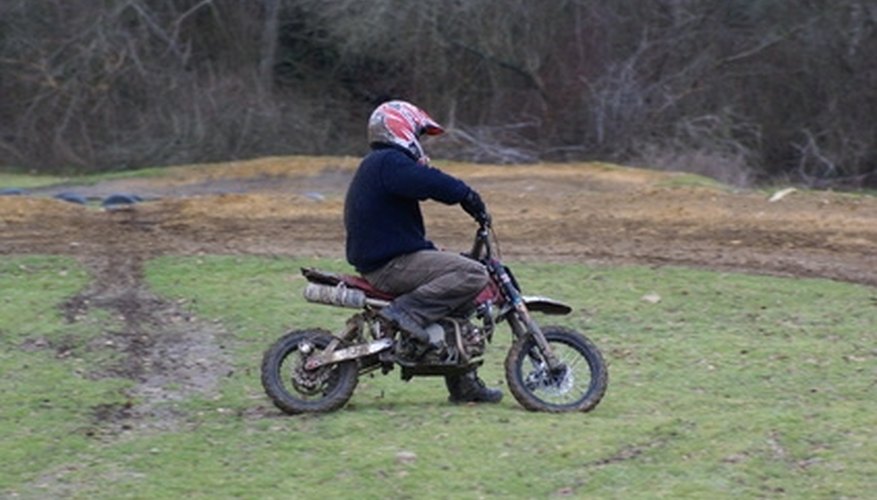
Pocket bikes are miniature versions of road and dirt racing motorbikes. They are 60 percent smaller than their full-sized siblings. It's hard to believe that a six foot adult can ride a bike this small and even more surprising that some can go as fast as 75 miles per hour. The cheapest and easiest way to maximize a pocket bike's performance is by adjusting its fuel/air mixture. This process of fine tuning the fuel/air ratio for all engine operating conditions is called tuning. Since tuning can make your engine more responsive from idle all the way to full throttle, it's well worth doing.
Items you will need
Bottle of white out
Small flat head screwdriver
Needle nose pliers
Mark the throttle. Do this by putting a whiteout mark near the front of the stationary housing (the side furthest from you when you're sitting on the bike) and another mark aligned with it on the throttle grip. This is the reference point where the throttle is fully closed. Open the throttle all the way and put another mark on the stationary housing that aligns with the new location of the mark on your throttle grip. This mark will be near the back of the stationary housing (the side closest to you when you're sitting on the bike). Put three more evenly spaced marks between the first two marks to represent 1/4 throttle, 1/2 throttle and 3/4 throttle. These marks will indicate how far open your throttle is and what adjustments need to be made.
Adjust the idle screw that regulates the fuel/air mixture from no throttle to 1/4 throttle. Begin by starting the engine and waiting for it to warm up. When it has, use the flat head screwdriver to turn the carburetor idle screw until the throttle valve begins to open and the engine is idling smoothly. Turn the idle screw in either direction until the engine reaches its maximum RPM. As soon as it does, turn the idle screw back until the RPM falls to 1000, then turn it back up again until the engine reaches its maximum RPM. If your carburetor doesn't have an idle system with an idle screw, skip this step.
Adjust the needle and needle jet that regulates your fuel/air mixture from 1/4 to 3/4 throttle. Go for a ride on a smooth empty road with your throttle open 1/4 of the way. Slowly roll up to the 3/4 position and listen to the engine. Is it running lean or rich? Turn the throttle back to 1/4 open then snap it up quickly to the 3/4 position. How did it feel when you accelerated quickly? Was it running rich or lean? If the engine feels rich, you can lean it out by moving the C clip on the needle up a notch with your needle nose pliers. If it feels lean, you can make the mixture richer by moving the C clip down a notch. Repeat the testing cycle every time you move the clip one notch until the engine has maximum power without getting too lean. The safest way to do this is by starting with your C clip in the bottom notch of the needle and gradually moving it up until your engine reaches peak power.
Adjust the main jet that regulates your fuel/air mixture from 3/4 to full throttle. The main jet has a hole that controls fuel flow, and these jets come in different hole sizes. Start your tuning process with the main jet that has the largest hole and work your way down through smaller holes until you find a jet that's just right. You can do this by going on a test ride with your throttle between 3/4 and wide open, then going to full throttle for a minute. Listen to your engine. Does it sound too lean or too rich? Back off immediately if your engine sounds lean, but this shouldn't be a problem, since the large hole will make your engine run rich. To lean out the mixture, switch to the jet with the next smallest hole size and continue testing with consecutively smaller jets until your engine is at its best between 3/4 and full throttle. It's probably wise to go one hole size larger at this point, since an overly lean mixture will destroy your engine.
References
Writer Bio
Dan Eash began writing professionally in 1989, with articles in LaHabra's "Daily Star Progress" and the "Fullerton College Magazine." Since then, he's created scripts for doctor and dentist offices and published manuals, help files and a training video. His freelance efforts also include a book. Eash has a Fullerton College Associate of Arts in music/recording production and a Nova Institute multimedia production certificate.



